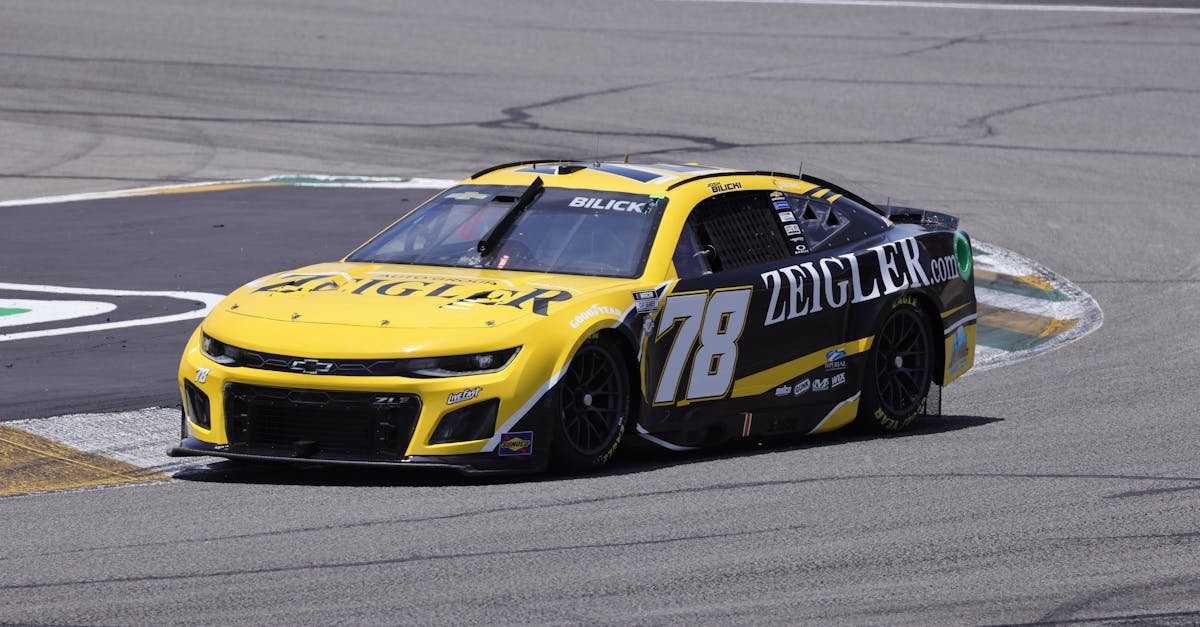Table of Contents
- Negotiating Car Price: Pro Secrets to Unlock Massive Savings
- Why Negotiating Still Matters (Even in Today’s Market)
- Preparation: Your Secret Weapon Before You Even Step Foot in the Dealership
- Mastering the Mindset: Confidence is Key
- Timing Your Purchase Strategically
- Entering the Dealership: Setting the Stage
- Pro Negotiation Tactics Unveiled
- Navigating the Finance Office (F&I) Minefield
- What If They Won’t Budge? Your Next Moves
- Conclusion: Driving Away with Confidence (and Savings)
- Frequently Asked Questions (FAQs)
Negotiating Car Price: Pro Secrets to Unlock Massive Savings
Let’s be honest, walking into a car dealership can feel like stepping into the lion’s den, right? The bright lights, the eager salespeople, the sheer amount of money on the line… it’s enough to make anyone’s palms sweat. But what if I told you that you hold more power than you think? What if negotiating a car price wasn’t some mystical art reserved for seasoned hagglers, but a skill you could master? Well, buckle up, because we’re about to dive deep into the pro secrets of car negotiation that dealerships probably hope you never learn. Forget sticker shock; we’re aiming for sticker satisfaction.
Why Negotiating Still Matters (Even in Today’s Market)
You might hear whispers that negotiation is dead, especially with recent inventory shortages and online pricing trends. Don’t believe the hype! While the market fluctuates, the fundamental structure of car sales means there’s almost always room to negotiate. Dealerships aren’t charities; they’re businesses designed to make a profit, and that profit isn’t just baked into the sticker price.
The Dealership’s Profit Centers
Think of a dealership like a multi-headed beast. They don’t just make money selling the car itself. Their real profit often comes from several places:
- Financing (F&I): Arranging loans (often at a higher interest rate than you could get elsewhere) is a huge money maker.
- Trade Ins: Offering you less than your old car is actually worth and then reselling it for a profit.
- Add ons & Warranties: Extended warranties, paint protection, VIN etching, fabric sealant… these often have massive markups.
- Service Department: Future repairs and maintenance.
Understanding these different avenues helps you see why focusing solely on the sticker price is only part of the puzzle. They might give you a great price on the car itself, only to make it all back (and more!) in the finance office or on your trade in. Negotiation is about the entire deal, not just one number.
Information Asymmetry: Leveling the Playing Field
Historically, dealerships held all the cards. They knew the invoice price, the holdbacks, the incentives – while you, the buyer, were largely in the dark. This is called information asymmetry. But guess what? The internet has blown that wide open! You now have access to vast amounts of information: pricing data, reviews, inventory levels, financing options. Negotiation today is about leveraging this information to bridge that gap and ensure you’re not overpaying simply because you don’t know any better. It’s about turning their advantage into your empowerment.
Preparation: Your Secret Weapon Before You Even Step Foot in the Dealership
Sun Tzu said, “Every battle is won before it’s ever fought.” This couldn’t be truer for car negotiation. Walking in unprepared is like going into an exam without studying – you’re setting yourself up for failure (or at least, overpaying). Your prep work is where the real savings are made.
Know Your Numbers: Research is Non-Negotiable
You wouldn’t buy a house without knowing its market value, right? Same applies to cars. Flying blind is the dealership’s dream scenario. Get specific!
Finding the True Market Value (TMV)
Forget the Manufacturer’s Suggested Retail Price (MSRP) for a moment. What are other people *actually* paying for the exact same make, model, and trim level in your local area? Websites like Edmunds, Kelley Blue Book (KBB), and TrueCar provide valuable “True Market Value” or “Fair Purchase Price” estimates based on real transaction data. Look up the specific configuration you want. This number becomes your anchor, your reality check against the dealership’s asking price.
Understanding Invoice Price vs. MSRP
The MSRP (Manufacturer’s Suggested Retail Price) is the “sticker price.” It’s what the manufacturer suggests the dealer sell the car for. The Invoice Price is supposedly what the dealership paid the manufacturer for the car. Supposedly is the key word here. The true dealer cost is often lower than the invoice price due to things like holdbacks (a percentage of the MSRP or invoice price paid back to the dealer by the manufacturer later) and factory-to-dealer incentives. While knowing the invoice price gives you a baseline, don’t get too hung up on it. Focus more on the TMV, but use the invoice price as a potential negotiation floor.
Secure Pre Approved Financing First
This is perhaps the single most powerful move you can make before negotiating. Walk into your bank or credit union (or apply online with reputable lenders) and get pre approved for a car loan. Why?
- It reveals your budget ceiling: You know exactly how much you can realistically afford.
- It gives you a benchmark interest rate: When the dealership’s finance manager presents their financing offer, you can immediately compare it. If they can beat your pre approved rate, great! If not, you politely decline and use your own financing.
- It separates the car price negotiation from the financing negotiation: It prevents the dealership from muddying the waters by lowering the car price slightly but jacking up the interest rate.
Having that pre approval letter in your pocket is like having a financial shield. It tells the dealership you’re serious and you’ve done your homework.
Decide on Your Target Price (and Walk Away Point)
Based on your TMV research and budget, determine two key numbers before you start talking to salespeople:
- Your Target Price: The realistic price you’d be happy paying, likely somewhere around or slightly below the TMV.
- Your Walk Away Point: The absolute maximum “out the door” price (including all taxes and fees) you are willing to pay. If the deal exceeds this number, you walk away. No exceptions.
Write these numbers down. Commit them to memory. This prevents emotional decision making in the heat of the negotiation.
Mastering the Mindset: Confidence is Key
Negotiation is as much a psychological game as it is a financial one. How you carry yourself and your internal attitude can significantly impact the outcome.
It’s Business, Not Personal
Remember, the salesperson isn’t your friend (even if they’re friendly!). They are there to do a job: sell a car for the highest possible profit. You are there to do a job: buy a car for the lowest possible price. It’s a business transaction. Don’t feel guilty about negotiating hard or asking for a better deal. They expect it. Keep emotion out of it; stay polite, professional, but firm.
Be Prepared to Walk Away (and Mean It)
This is your ultimate leverage. If you’re not willing to walk away from a deal that doesn’t meet your pre determined walk away point, you have no real power. Dealerships are experts at sensing desperation or emotional attachment to a specific car. If they know you *have* to buy today, or you’ve fallen in love with the car on the lot, they know they don’t need to discount it much. Being genuinely prepared to say, “Thanks, but I can’t do that price,” and heading for the door often magically brings the manager out with a better offer. If it doesn’t? There are other cars and other dealerships.
Timing Your Purchase Strategically
Can when you buy affect how much you pay? Absolutely! Dealerships and salespeople often operate on quotas and incentives tied to specific timeframes.
Best Times of the Month, Quarter, and Year
Salespeople and dealerships have monthly, quarterly, and annual sales targets. As these deadlines approach, they become more motivated to move inventory to hit bonuses or quotas. This means:
- End of the Month: The last few days of any month can be good, as salespeople push to meet their personal goals.
- End of the Quarter: March, June, September, and especially December often see bigger discounts as dealerships strive to meet manufacturer targets.
- End of the Year: Late December combines end of month, end of quarter, and end of year pressure, often making it a prime time for deals (though inventory might be thinner).
Shopping earlier in the week (Monday or Tuesday) might also yield better results, as dealerships are typically less busy than on weekends.
Leveraging End of Model Year Sales
When the next model year vehicles start arriving (usually in late summer or fall), dealerships need to clear out the remaining stock of the current model year cars. These “leftover” models are brand new but might lack the latest tiny updates. This is often where you can find significant discounts and manufacturer rebates as dealers are highly motivated to make space for the new inventory.
Entering the Dealership: Setting the Stage
Okay, you’ve done your homework, got your financing, know your numbers, and timed it right. Now it’s time to engage. How you start the conversation matters.
Control the Conversation: Focus on the Out the Door Price
Salespeople are trained to control the negotiation. They might want to talk about monthly payments, the value of your trade in, or the MSRP. Don’t fall for it. Politely but firmly steer the conversation towards the “Out the Door” (OTD) price. This is the total price including the vehicle cost, all taxes, title, license fees, documentation fees (which can sometimes be negotiated), and any mandatory add ons. Why? Because focusing on monthly payments allows them to hide costs by extending the loan term. Focusing only on the car’s price ignores hefty fees. The OTD price is the *only* number that truly matters. Get quotes from multiple dealerships via phone or email focusing on the OTD price for the specific vehicle you want. This lets you compare apples to apples.
Keep Your Trade In Separate (Initially)
If you have a car to trade in, don’t mention it right away! Negotiate the price of the new car *first*, as if you have no trade in. Once you have a firm OTD price agreed upon for the new vehicle, *then* introduce the trade in and negotiate its value separately. Why the separation? Dealerships love to play a shell game: they might offer you a fantastic price on the new car but severely lowball your trade in (or vice versa) to make the overall deal look better than it is. Get the best price on the new car first, then fight for the fair market value of your trade in (you should have researched its value beforehand too, using KBB or getting quotes from places like CarMax or Carvana).
Pro Negotiation Tactics Unveiled
Ready to step up your game? These tactics, used correctly and politely, can make a difference.
The Power of Silence
After the salesperson presents an offer, or after you make a counteroffer, don’t feel obligated to immediately fill the silence. Pause. Look thoughtful. Let the quiet hang for a few moments. People are often uncomfortable with silence and feel compelled to speak, sometimes making concessions just to break the tension. Use it strategically after a price is mentioned – it signals you’re considering it seriously but aren’t jumping at it.
Anchoring Low (But Realistically)
Anchoring is a psychological principle where the first number mentioned heavily influences the subsequent negotiation. When it’s your turn to make an offer, start low – perhaps slightly below your target price, but not insultingly so (base it on your TMV research). This sets a lower anchor point for the negotiation. The dealership will likely counter higher, but the final price is more likely to land closer to your initial anchor than if you had started higher. For example, if TMV is $25,000 and your target is $24,500, you might initially offer $23,800.
Handling the “Let Me Talk to My Manager” Game
This is a classic tactic. The salesperson acts as your friend, battling the “unseen” manager in the back office who holds the purse strings. It’s designed to make you wait, build pressure, and make the final offer seem like a hard won concession. Recognize it for what it is. Stay patient and firm. When the salesperson returns, evaluate the offer against your target price. If it’s not good enough, reiterate your position or your walk away number. Sometimes, asking to speak directly *with* the manager can cut through the back and forth, but often just holding firm is effective.
Dealing with Add Ons and Extras
After you’ve agreed on a price, especially in the F&I office, you’ll likely be presented with a menu of extras: extended warranties, GAP insurance, tire protection, paint sealant, etc. Be extremely skeptical. These are high profit items for the dealership. Ask yourself:
- Do I *really* need this?
- Can I get it cheaper elsewhere? (Often, yes – e.g., GAP insurance from your auto insurer).
- Is the price negotiable? (Often, yes).
Don’t be afraid to say “no” repeatedly. Scrutinize mandatory add ons like “dealer prep” or unwanted accessories that might have been added to the sticker. If they weren’t discussed or agreed upon earlier, push back hard or be ready to walk.
Navigating the Finance Office (F&I) Minefield
You’ve agreed on the car price, survived the add on pitch… but you’re not done yet. The Finance & Insurance (F&I) office is where many great deals go sideways.
Stick to Your Pre Approved Loan (Usually)
Remember that pre approved loan? Now’s the time to deploy it. The F&I manager will almost certainly offer you dealership financing. Listen to their offer – sometimes, manufacturers offer special low APR financing that even your bank can’t beat. If their rate and terms are genuinely better than your pre approval, great! But if not, stick to your guns and use the financing you secured beforehand. Don’t let them pressure you into a higher rate loan.
Scrutinize Every Fee
Go through the final purchase order line by line. Question every single fee. Understand what it’s for. Common fees include:
- Tax, Title, License: These are generally government mandated and non negotiable (though ensure they’re calculated correctly).
- Documentation Fee (“Doc Fee”): This covers the dealership’s cost of paperwork. It varies wildly by state and dealership. Some states cap it, others don’t. While often presented as fixed, it can sometimes be negotiated down, or you can negotiate the car price lower to offset a high doc fee. Ask upfront what their doc fee is.
- Bogus Fees: Watch out for things like “dealer prep,” “advertising fees,” or unnecessary add ons reappearing here. Challenge anything that wasn’t agreed upon.
Don’t sign anything until you understand and agree with every single number on that contract.
What If They Won’t Budge? Your Next Moves
Sometimes, despite your best efforts, the dealership just won’t meet your price or terms. What now?
- Reiterate Your Final Offer: Clearly state your best OTD price based on your research and budget.
- Be Polite, But Firm: “I appreciate your time, but based on my research and budget, $X is the most I can pay for this vehicle out the door. If that works, we have a deal. If not, I understand.”
- Walk Away: If they don’t accept, thank them for their time and leave. Seriously. Get up and walk out. Don’t linger. Don’t hesitate.
- Try Another Dealership: Your research likely identified multiple dealerships selling the car you want. Contact them with your target OTD price. Competition is your friend.
- Consider Waiting: If the market is particularly tight or you’re not in a rush, waiting a few weeks or months might bring better deals or incentives.
Remember, walking away isn’t failure; it’s sticking to your plan and refusing to overpay.
Conclusion: Driving Away with Confidence (and Savings)
Negotiating a car price doesn’t have to be a stressful ordeal. By arming yourself with information, securing financing beforehand, adopting the right mindset, and employing strategic tactics, you shift the power dynamic. It’s about preparation, patience, and the willingness to walk away. Think of it less as a confrontation and more as a business discussion where you’re aiming for a mutually acceptable outcome – one that just happens to lean more in your favor! You’ve learned the pro secrets: research thoroughly, focus on the OTD price, keep financing and trade ins separate initially, question everything, and never feel pressured. Now, go forth and negotiate like a pro – your wallet will thank you when you drive off the lot knowing you got the best possible deal.
Frequently Asked Questions (FAQs)
FAQ 1: Can I really negotiate significantly below MSRP?
A: It depends heavily on the specific vehicle’s demand, inventory levels, time of year, and current incentives. For high demand, low supply vehicles, negotiating below MSRP might be difficult (though aiming for MSRP without inflated markups is a win). However, for more common vehicles, older model years, or during sales events, negotiating several percentage points below MSRP, potentially close to or even below invoice price (when considering incentives), is often achievable with solid preparation and tactics.
FAQ 2: Is it better to negotiate online/via email first?
A: Yes, often it is! Contacting multiple dealerships’ internet sales departments via email or their online forms allows you to get competing Out the Door (OTD) price quotes without the pressure of being physically present. Specify the exact vehicle (VIN if possible) and ask for the complete OTD price including all fees. This lets you leverage offers from one dealer against another before you even step inside. It saves time and puts you in control from the start.
FAQ 3: What’s the biggest mistake people make when negotiating?
A: Falling in love with a specific car on the lot and showing it. Emotional attachment kills your leverage. The second biggest mistake is negotiating based on monthly payments instead of the total Out the Door price. Dealerships can easily manipulate loan terms to make a high price seem affordable month to month, costing you much more in the long run.
FAQ 4: Does negotiating work for used cars too?
A: Absolutely! Negotiation is arguably even *more* important for used cars. Pricing is less standardized than for new cars, and factors like condition, mileage, and vehicle history create more variables. Research comparable used car values (using KBB, Edmunds, NADA Guides), get a pre purchase inspection (PPI) from an independent mechanic, and be prepared to negotiate firmly based on your findings and the car’s specific condition.
FAQ 5: Should I tell the salesperson I’m paying cash?
A: It’s generally best *not* to reveal you’re paying cash (or using your own pre approved financing) until *after* you’ve negotiated and agreed upon the final Out the Door price of the vehicle. Dealerships make significant profit from financing. If they know early on they won’t make money financing you, they may be less willing to discount the car’s price itself, hoping to maximize profit there instead. Negotiate the car price first, then reveal your payment method.









